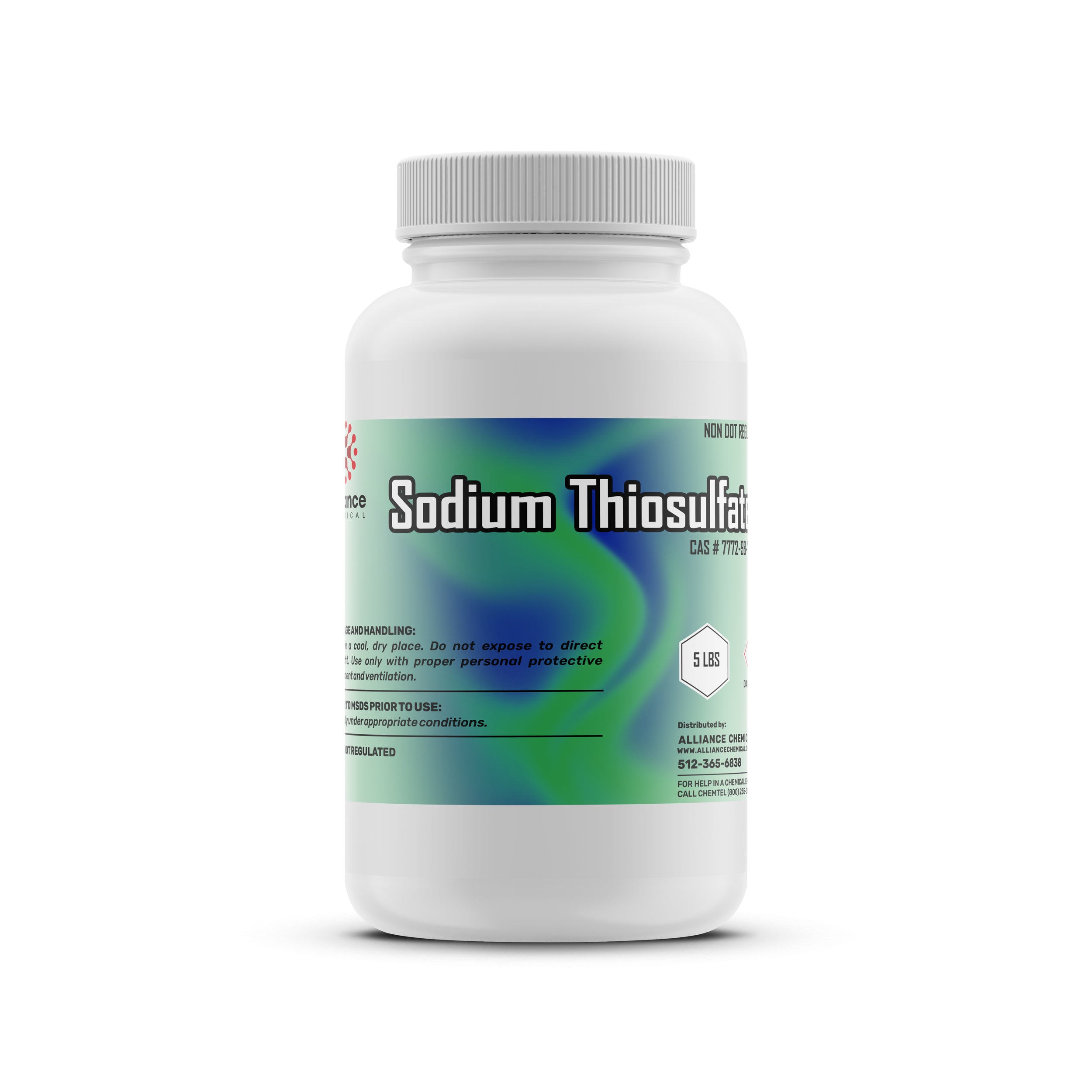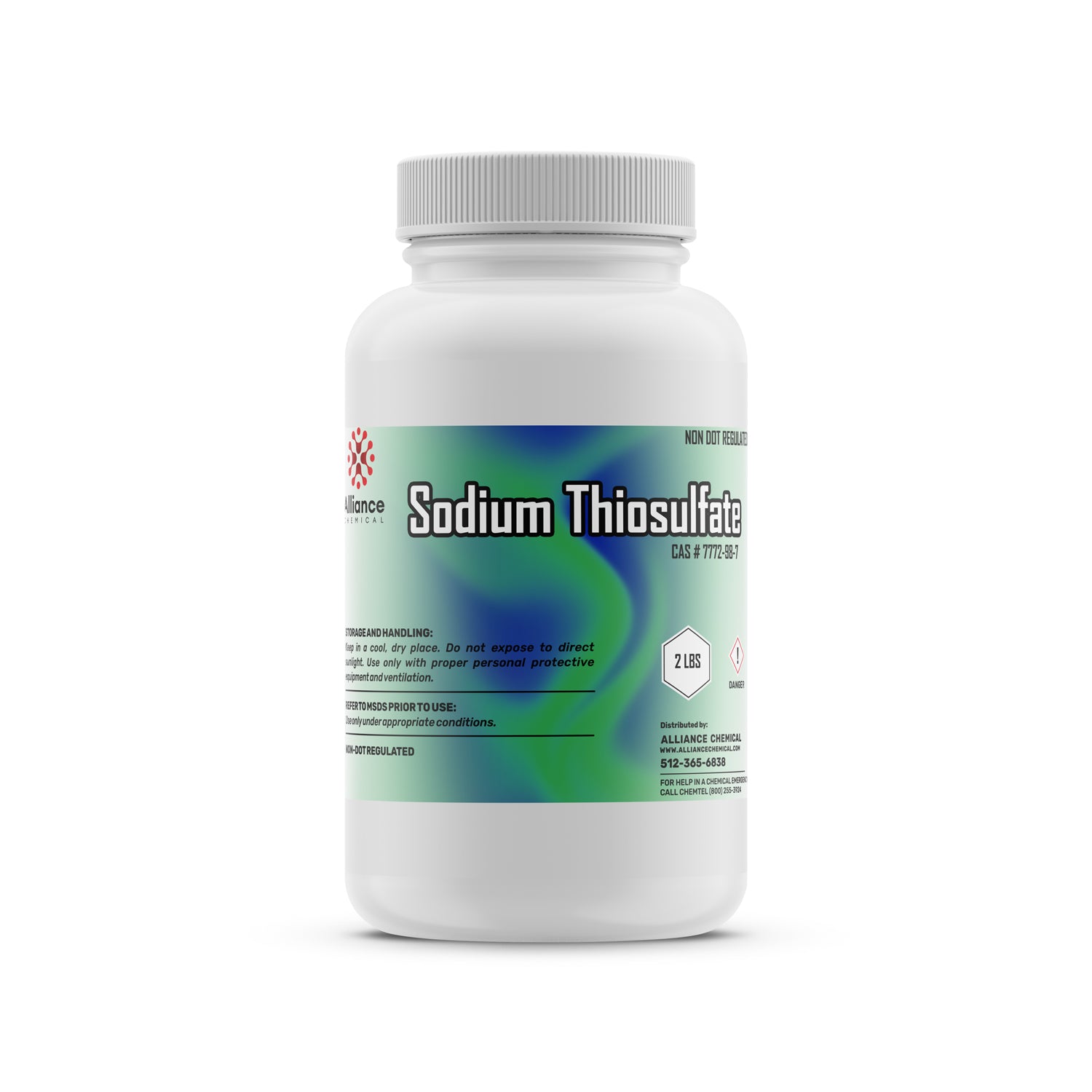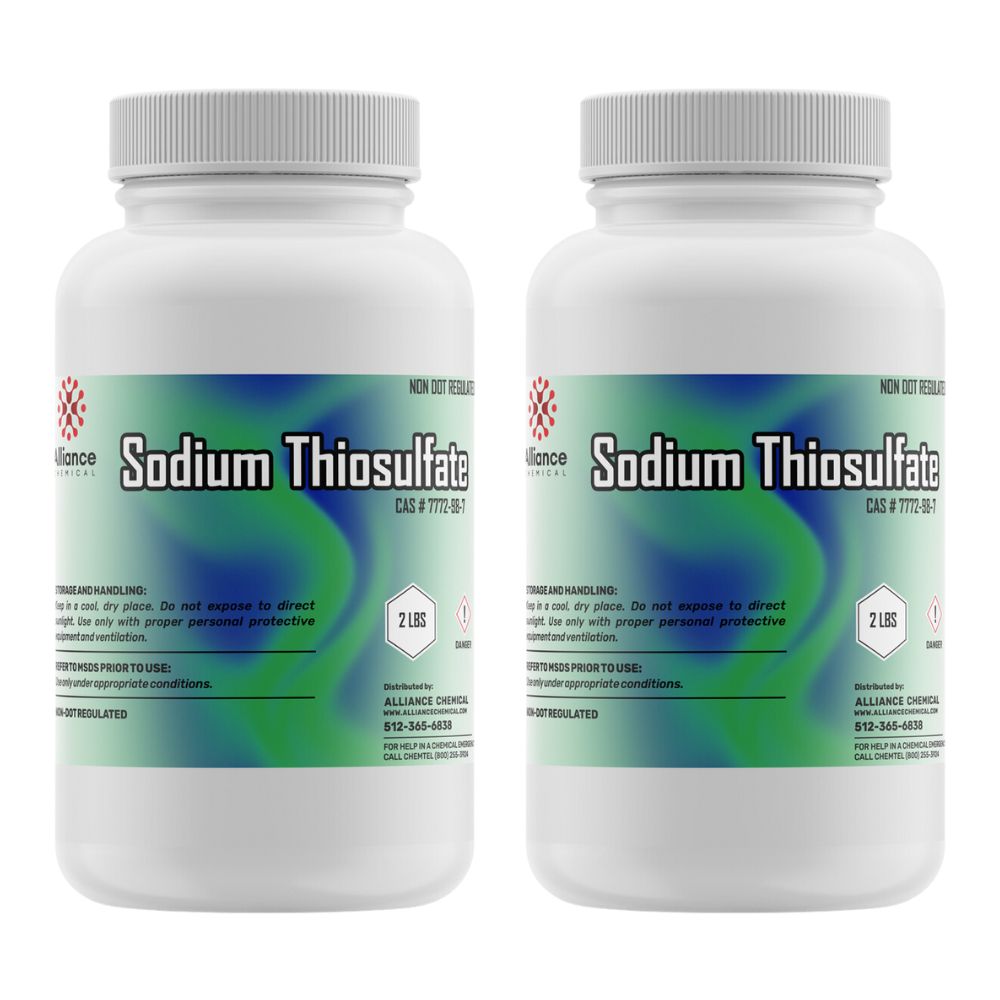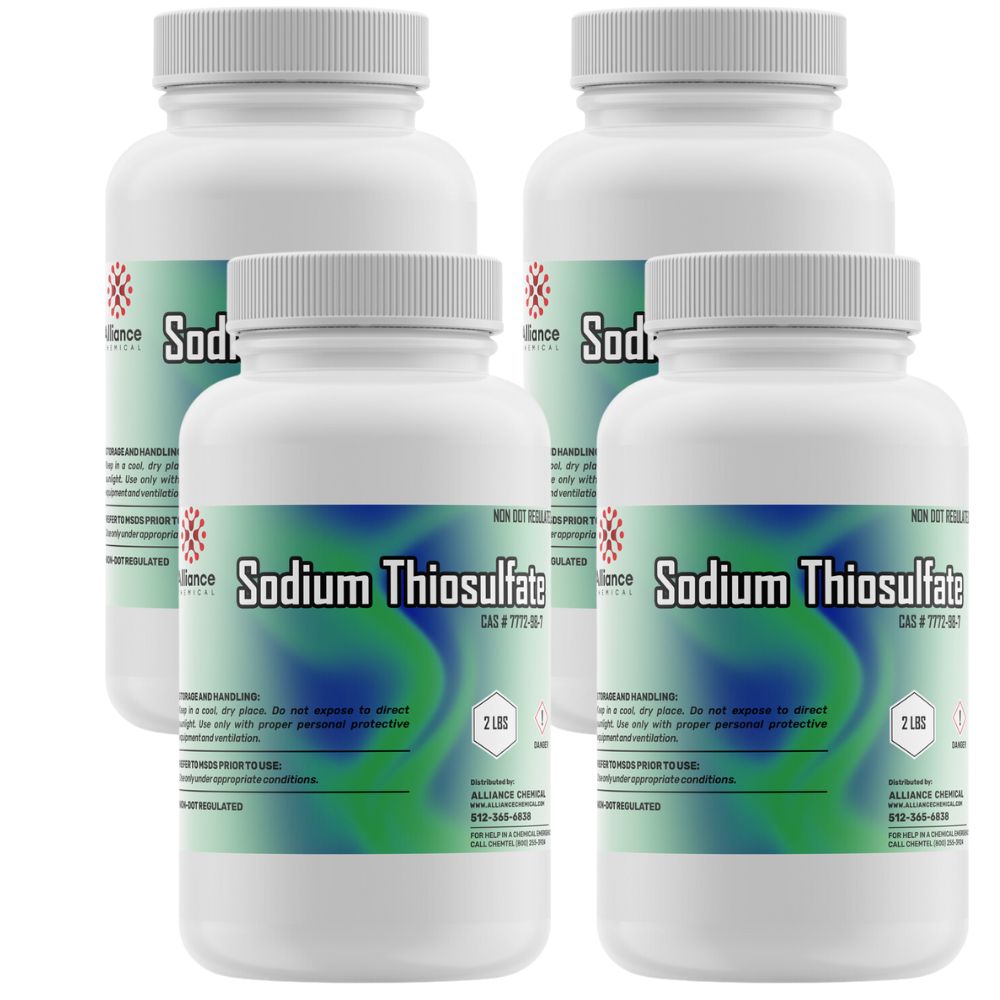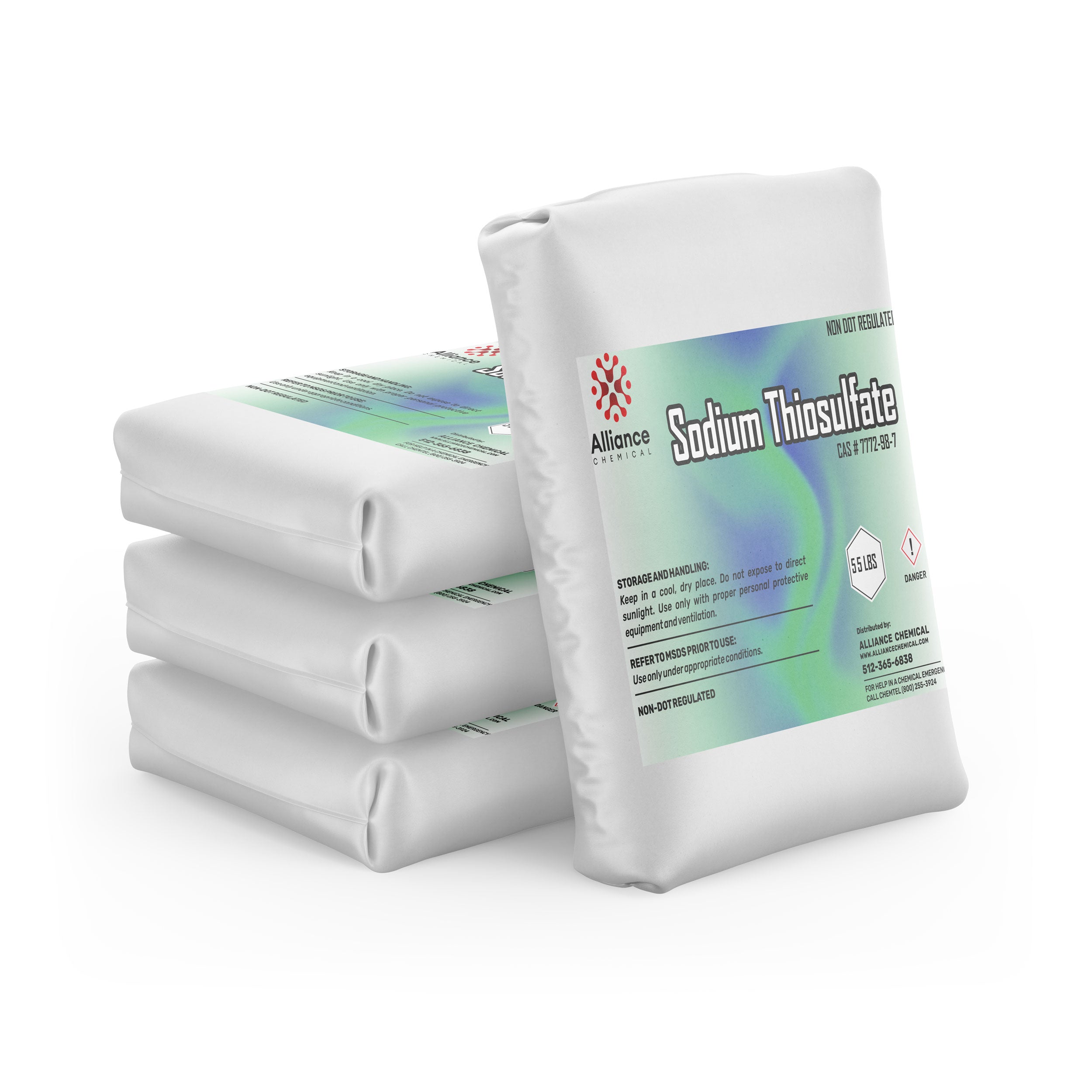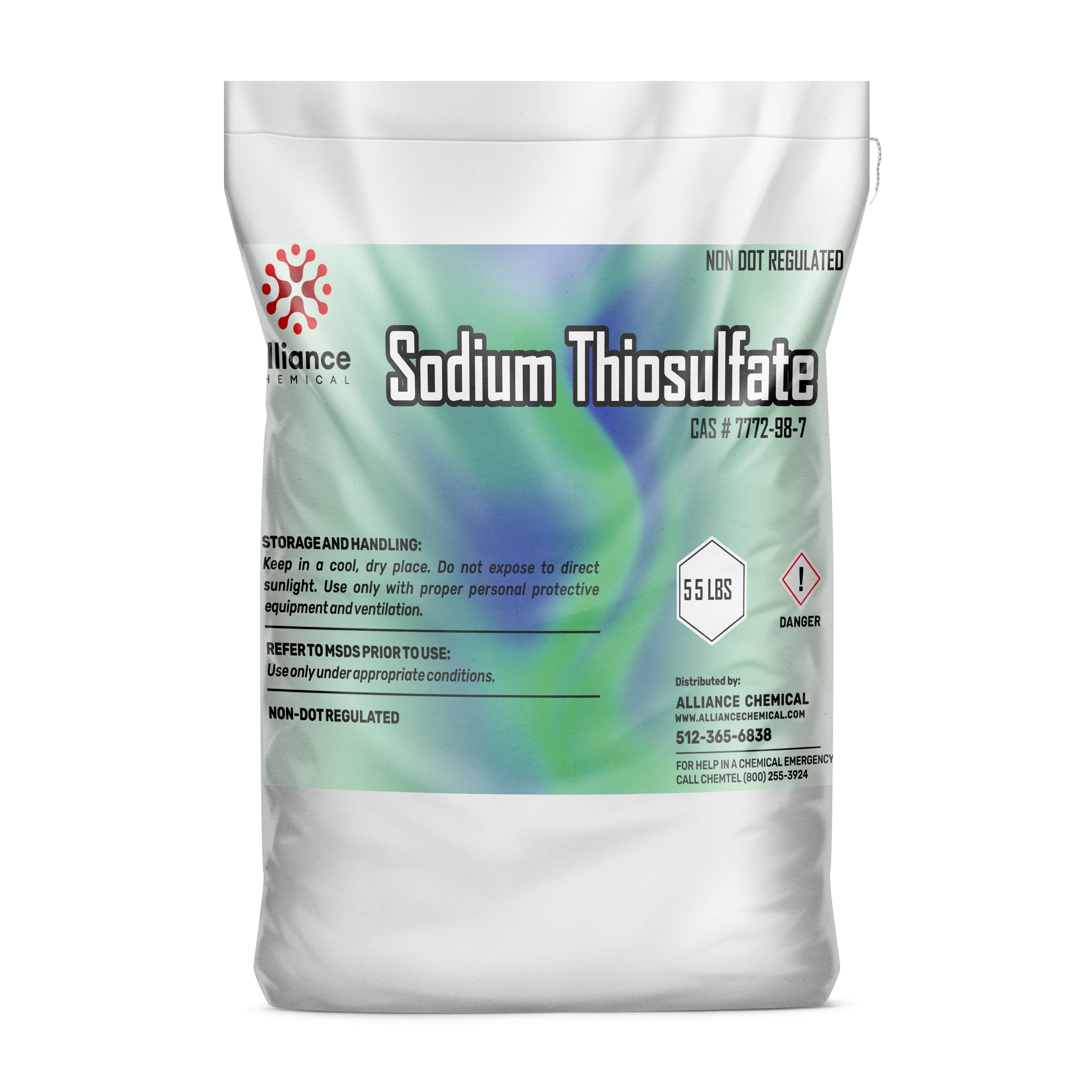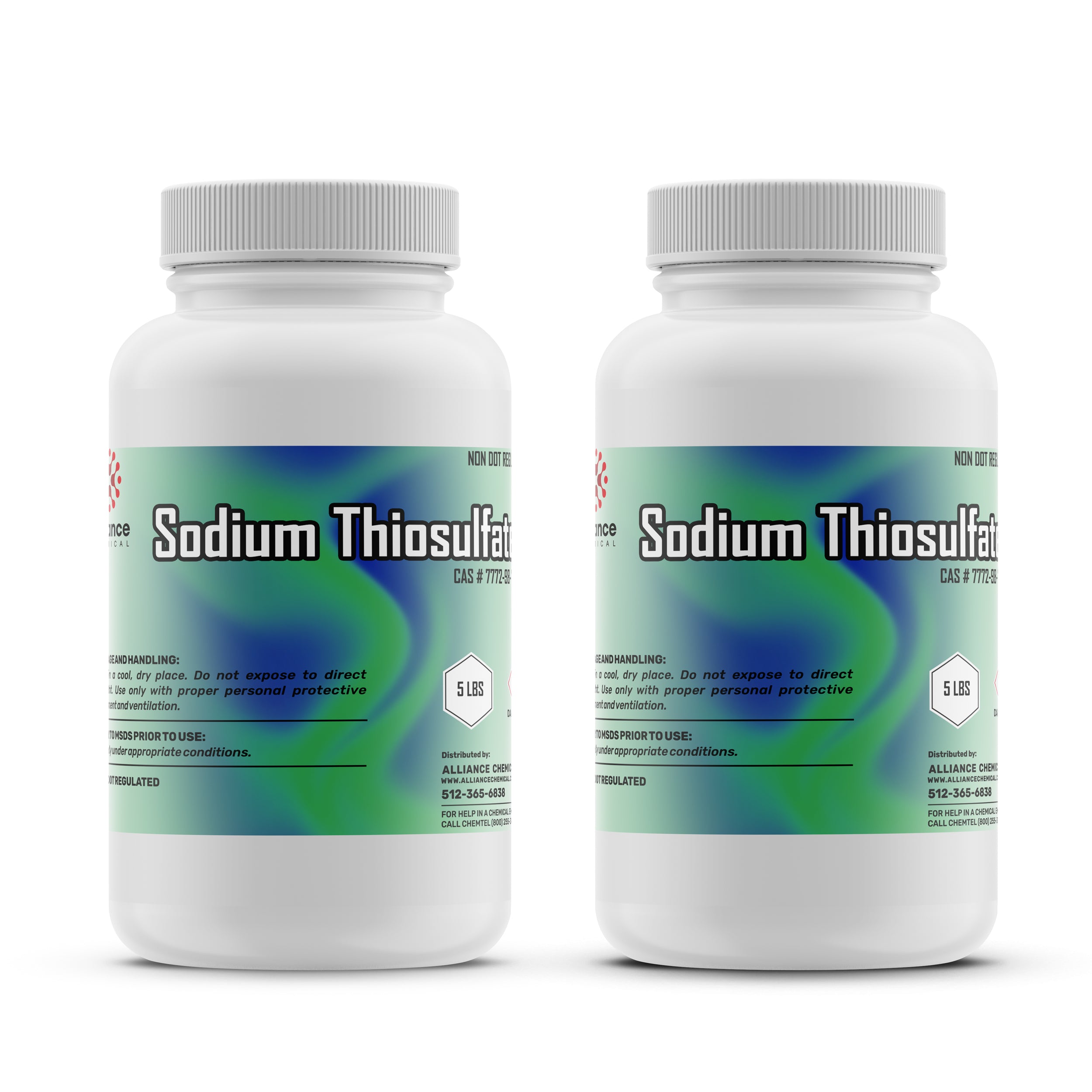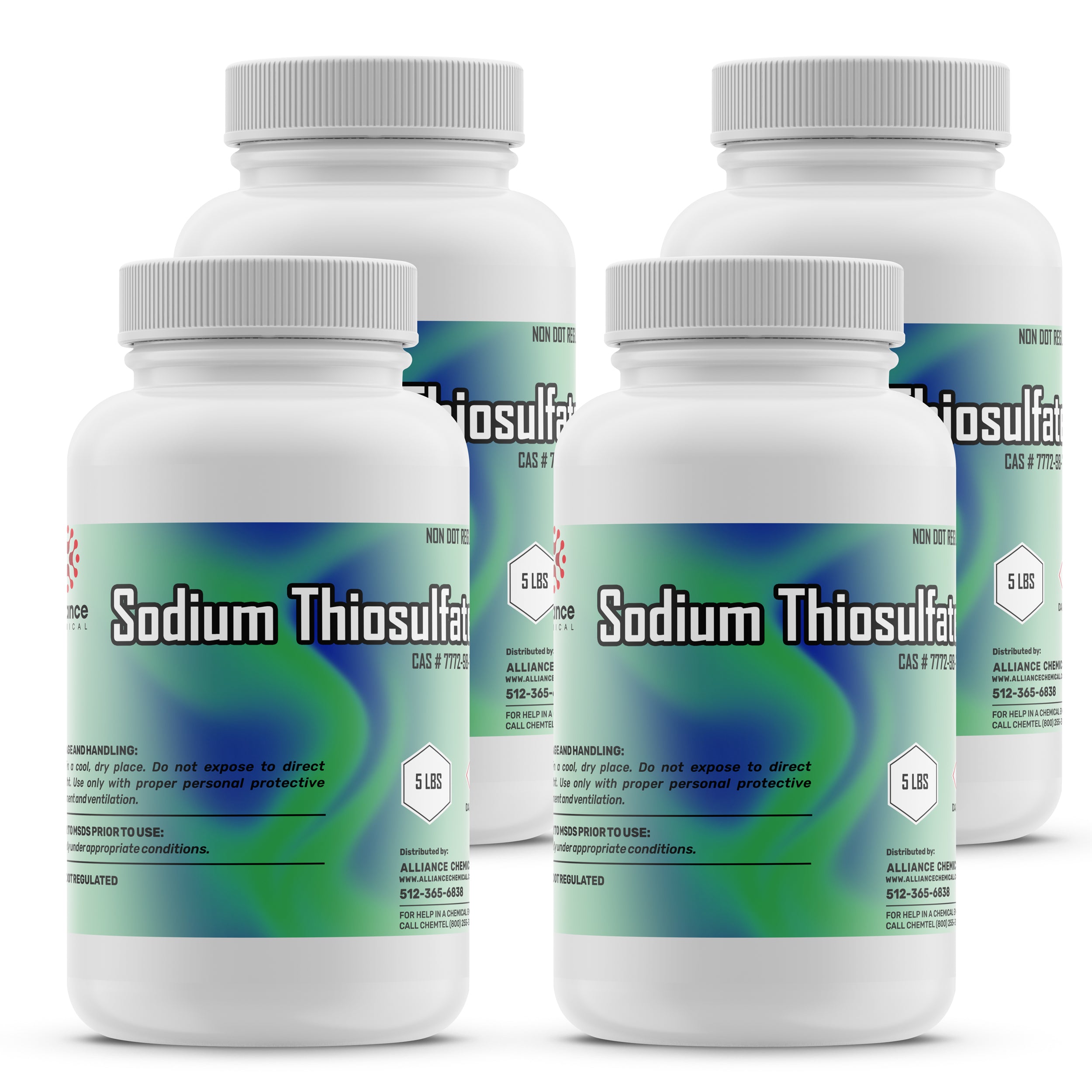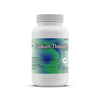Ask a question
Product Overview
Sodium thiosulfate (Na₂S₂O₃) is a white crystalline powder used across multiple industrial sectors as a reliable reducing agent and dechlorinating additive. It supports analytical workflows by enabling controlled redox reactions and participates in water treatment processes to neutralize residual chlorine and chloramines. The product meets ACS Reagent Grade specifications and USP-NF monograph expectations, providing consistent purity and lot-to-lot reproducibility essential for laboratory and manufacturing environments. Its stability under dry storage conditions and compatibility with standard dosing systems make it a favored choice for precise chemical management in process streams and analysis workflows.
In addition to dechlorination, sodium thiosulfate serves as a clarifying and protective agent in photography and textile processing, where controlled reduction and chlorine neutralization are required. Its white crystalline form, odorlessness, and high solubility in water support easy dissolution and rapid integration into production lines or analytical methods. Comprehensive COA parameters, including tight assay ranges and low impurity levels, offer transparency for audit readiness and quality control programs in regulated settings.
Key Properties
- Property Name: CAS number
- Chemical Formula: Na₂S₂O₃
- Molecular Weight: 158.11 g/mol
- Appearance: White crystalline powder
- Odor: Odorless
- Solubility: Soluble in water
- Density (25°C): 1.667 g/mL
- Specific Gravity 20°C: 1.66–1.68 (typical 1.67)
- Specific Gravity 25°C: 1.66–1.68 (typical 1.67)
- Residue After Ignition: Max 0.05% (typical 0.01%)
- Chloride (Cl): Max 10 ppm (typical 5 ppm)
- Nitrate (NO₃⁻): Max 5 ppm (typical 2 ppm)
- Ammonium (NH₄⁺): Max 5 ppm (typical 2 ppm)
- Sulfate (SO₄²⁻): Max 50 ppm (typical 20 ppm)
- Phosphate (PO₄³⁻): Max 5 ppm (typical 1 ppm)
- Arsenic (As): Max 0.1 ppm (typical 0.02 ppm)
- Heavy Metals (as Pb): Max 0.5 ppm (typical 0.1 ppm)
- Iron (Fe): Max 0.5 ppm (typical 0.1 ppm)
- Copper (Cu): Max 0.5 ppm (typical 0.1 ppm)
- Manganese (Mn): Max 0.5 ppm (typical 0.1 ppm)
- Nickel (Ni): Max 0.2 ppm (typical 0.05 ppm)
- Lead (Pb): Max 0.2 ppm (typical 0.05 ppm)
- Zinc (Zn): Max 0.5 ppm (typical 0.1 ppm)
- Aluminum (Al): Max 1 ppm (typical 0.3 ppm)
- Chromium (Cr): Max 0.2 ppm (typical 0.05 ppm)
- Sodium (Na): Max 5 ppm (typical 2 ppm)
- Potassium (K): Max 5 ppm (typical 2 ppm)
- Magnesium (Mg): Max 5 ppm (typical 2 ppm)
- Calcium (Ca): Max 5 ppm (typical 2 ppm)
- Water Content (Karl Fischer): Max 0.2% (typical 0.05%)
- pH (stability range): Critical for stability; typical specification noted to maintain effectiveness
- Substances Reducing Permanganate: Passes test
- H2SO3 (Sulfurous Acid) Content: Max 10 ppm (typical 5 ppm)
- Available Chlorine (WT%): Min 0%, Max 0.5% (typical 0.1%)
- Free Alkali (NaOH WT%): Max 0.5% (typical 0.1%)
- Aldehydes: Max 2 ppm (typical 0.5 ppm)
Common Applications
- Water Treatment: Used as a dechlorinating agent in municipal water treatment processes to neutralize residual chlorine and protect downstream processes.
- Analytical Chemistry Reagent: Serves as a reducing agent in titrations and other analytical procedures, enabling accurate redox measurements.
- Photography: Utilized in photographic processing to fix images by removing unreacted silver halides and stabilizing developed images.
- Textile Industry: Applied in dyeing processes to neutralize excess chlorine and improve color fastness and clarity.
- Pharmaceutical Manufacturing: Used in the synthesis of certain pharmaceutical compounds, enabling controlled redox chemistry in production pipelines.
- Industrial Cleaning: Acts as a reducing and chelating agent to assist in removing oxidizing residues during cleaning cycles.
- Metal Surface Treatment: Employed in pretreatment steps to reduce oxide layers and prepare metal surfaces for coating adhesion.
Safety Precautions
Handle and store in a cool, dry area away from incompatible materials, in HDPE containers to minimize moisture uptake. Use appropriate PPE including chemical-resistant gloves, splash goggles, and lab coat or coveralls; ensure adequate ventilation and avoid generation of dust. Maintain containers closed when not in use and store away from oxidizers and heat sources to preserve product integrity.
Consult the Safety Data Sheet (SDS) prior to handling. The product is classified with hazard statements including causes eye irritation (H319) and causes skin irritation (H315). In case of exposure, flush eyes with water for several minutes, wash skin with soap and water, and relocate to fresh air if inhaled. If ingested or symptoms persist, seek medical attention promptly. For emergencies, follow standard industrial hygiene and spill response procedures, and transport should be in accordance with UN 1719, Sodium thiosulfate, Class 9, Packing Group III.
Benefits
✔ High Purity ACS/USP-NFCompliance – Consistent assay ranges (min 99%, typical 99.8%) ensure reliable performance across applications.
✔ Strong Dechlorination and Redox Capabilities – Effective in water treatment and analytical workflows, with precise control of oxidation states.
✔ Excellent Storage Stability – Dry storage with low moisture uptake maintains potency and minimizes hydrolysis risk.
✔ Regulatory and Quality Transparency – Documentation aligns with ACS Reagent Grade standards and USP-NF monographs; comprehensive COA parameters support audit readiness.
| Property | Value |
|---|---|
| Molecular Weight | 158.11 g/mol g/mol |
| Formula | Na2S2O3 |
| Grade | ACS |
| Flash Point | N/A |
| Form | Solid |
| Solubility | High water solubility, moderate ethanol solubility |
| Appearance | White crystalline powder |
| Melting Point | 48°C °C |
| Boiling Point | 100°C °C |
| Specific Gravity | 1.667 |
| Industry | Environmental, Industrial, Wastewater |
YBW-6AH-S5Q
$15.44
Unit price
Compare Products
| Price |
|---|
| SKU |
| Rating |
| Discount |
| Vendor |
| Tags |
| Weight |
| Stock |
| Short Description |

